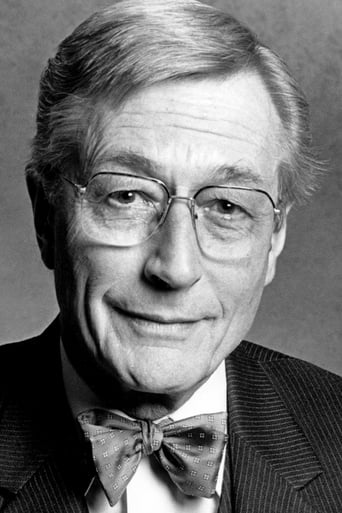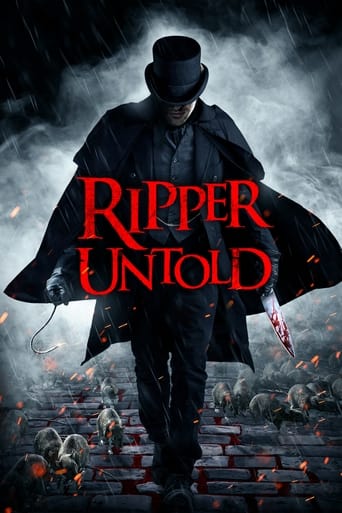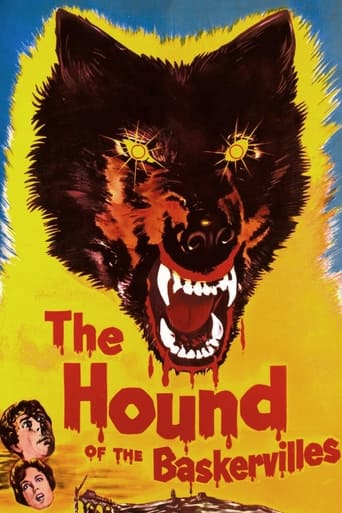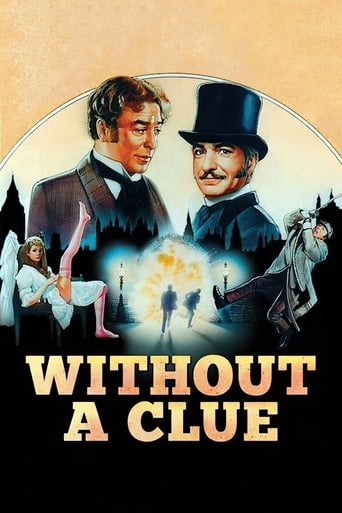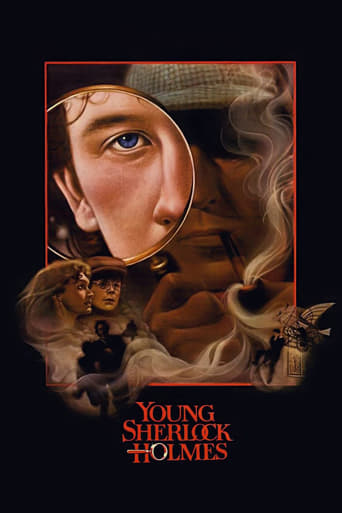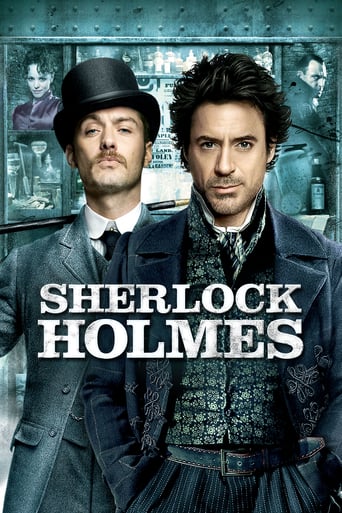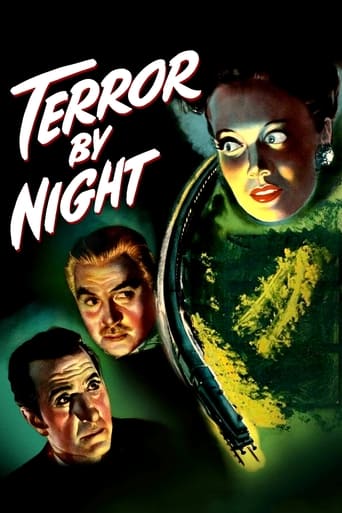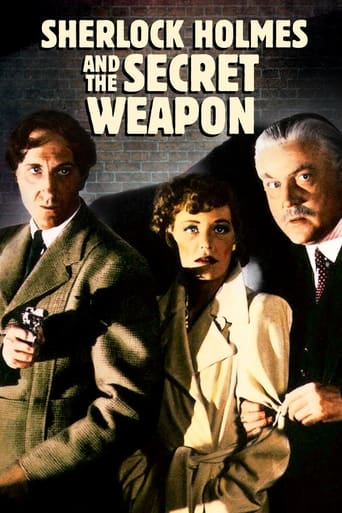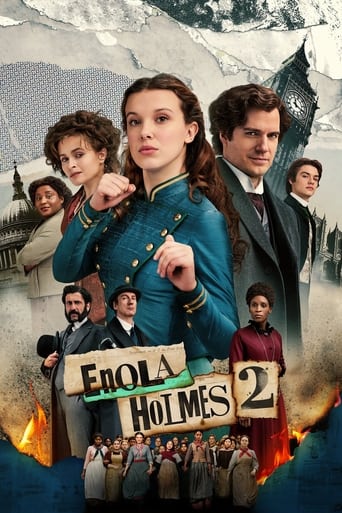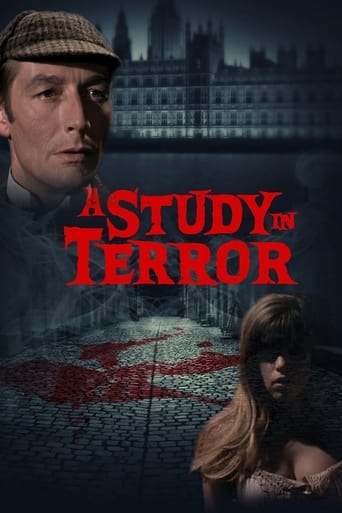
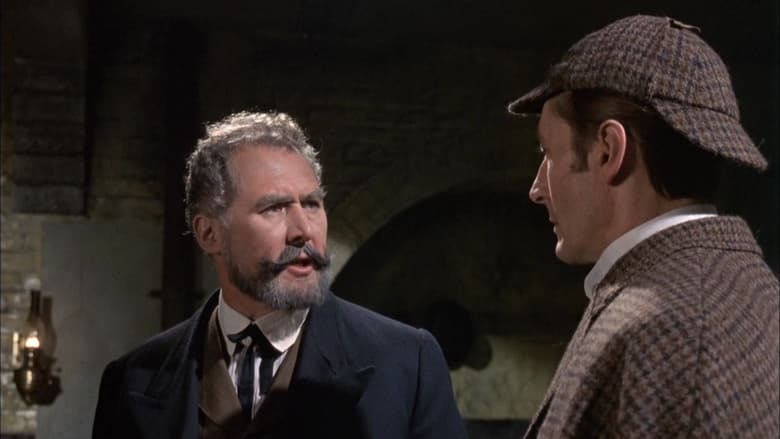
A Study in Terror (1966)
When Watson reads from the newspaper there have been two similar murders near Whitechapel in a few days, Sherlock Holmes' sharp deductive is immediately stimulated to start its merciless method of elimination after observation of every apparently meaningless detail. He guesses right the victims must be street whores, and doesn't need long to work his way trough a pawn shop, an aristocratic family's stately home, a hospital and of course the potential suspects and (even unknowing) witnesses who are the cast of the gradually unraveled story of the murderer and his motive.
Watch Trailer
Cast


Similar titles
Reviews
This is a must-see and one of the best documentaries - and films - of this year.
what a terribly boring film. I'm sorry but this is absolutely not deserving of best picture and will be forgotten quickly. Entertaining and engaging cinema? No. Nothing performances with flat faces and mistaking silence for subtlety.
The movie's not perfect, but it sticks the landing of its message. It was engaging - thrilling at times - and I personally thought it was a great time.
A clunky actioner with a handful of cool moments.
Sherlock Holmes (John Neville) and Dr. Watson join the hunt for the notorious serial killer, Jack the Ripper.Between this movie and "Murder by Decree", this is the superior film. More dark humor, a better Holmes, and much more of a horror aesthetic. One could argue it is not a horror film, but I would strongly disagree... early on, we see a man in black gloves (but no face) shove a dagger through the skull of a victim. Another is stabbed and left discarded in a tub. This is very much on the periphery of the giallo or slasher film.There is some similarity between this and "From Hell", also. Which of those two is better, that is hard to say. They are different animals. This one has more of the humor (albeit dark), but "From Hell" is the more grisly picture. They both have some of the royalty aspects, though this one invents the names of the royals rather than uses the actual suspects.I would recommend this film rather highly.
I rather enjoyed this tale of mayhem and detection in Victorian London, although it owes nothing to Sir Arthur Conan-Doyle except the identity and temperament of the two lead characters.John Neville makes an acceptable Sherlock Holmes and Donald Houston fills in the role of his sidekick, Doctor Watson, with dignity and compassion.The story pits Holmes and Watson against, not the cerebral machinations of Professor Moriarty, but the very real predations of Jack the Ripper, probably the most famous serial killer in history. Some fans have wondered why Conan-Doyle himself never tackled the job. After all, it was contemporaneous with the popularity of his creation, Holmes, since the murders took place in 1888.Some of the characters in the film correspond roughly to historical figures -- the rabble-rouser who inflames the crowds demanding justice. Most are made out of whole cloth. Aberline, the detective in charge, appears nowhere.The plot of the movie throws a couple of likely suspects at us -- Anthony Quayle as a police mortician and community organizer who wants to rid Whitechapel of prostitution and debauchery, the missing medical-school drop out who is the son of a Duke. But in fact the movie presents the real crazed murderer as a nice guy with a complex of improbable motives.Neville lacks the confident stride and crisp diction of Basil Rathbone. He looks properly hawk-like but should probably be taller and a bit haughty, which he is not. He has one supremely good moment when that mask of dispassion is dropped. Inspector Lestrade has just come out of the drab flat of Mary Kelly, last of the five victims, who has been not just disemboweled but cut to pieces, with her intestines draped over the furniture. Lestrade looks stricken. Holmes stops short and asks with concern, "Lestrade, my dear fellow, are you not well?" It's only a moment but in that moment we can all realize how horrifying these events really are. Previously, Jack's encounters with the whores have been shown but there's been a minimum of blood. Now we have a better grasp, through Holmes' reaction to Lestrade's state, what went on after the girls were dead.Whitechapel at the time was considerably worse than what we see on the screen. The saloon where the whores pick up fares and get drunk looks hardly worse than some of the bars I've visited on Third Avenue in New York. The girls themselves are decently dressed and the streets we see are properly spooky. The problem is that the production designer may not have known what conditions were like in Whitechapel in 1888, or else it was thought they were too repulsive to be shown on screen.The fact is, there was no safety net for the poor. If you were a wife and mother and your husband was killed or disabled on the job, you became a street walker wearing a signature white apron. Your clothes turned to rags, you worked and lived for a drink of gin, and you were liable to sleep in a flop house with lice-ridden chairs instead of beds, although there was a rope strung across the ranks of chairs so customers could have something to rest their torsos on. Your teeth went to hell. You didn't look sexy and beautiful like Jack's victims on the screen. And the streets were a murky mixture of garbage and the detritus from chamber pots and horse manure. The neighborhood reeked. Most of this unpleasantness isn't suggested in the movie, which presents us with a more decorous model of Victorian poverty.Still, the central plot is kind of interesting as we follow Holmes and Watson through both the upper and lower levels of London society. And Anthony Quayle's performance is worth catching for itself. The character, as written, is full of ambiguity, as real characters tend to be, and Quayle, with his Australopithecine features, is just fine in the role.
Brilliant account of the meeting between Sherlock Holmes and Jack the Ripper.Sherlock Holmes is a better choice than American Sam Lowry in the 1959 version and James Hill's work predates later works such as "murder by decree" and "Jack the Ripper" (the MTV Version starring Michael Caine).With a small budget ,the depiction of the narrow streets of London,with the children begging for food,the soup kitchen where you have to sing the Lord's praises before having a good feed,the slaughterhouse where the butchers are carving chunks ("ain't I a better piece of meat?" says the hooker ),the shameful luxury in which indifferent snob aristocrats hide their rottenness under gold and velvet ,all rings true.As for the story itself ,it's an absorbing investigation which involves Sherlock,his faithful Watson -who can't put up with the lord's words: "being a doctor or a surgeon is not a "noble" occupation" - Lestrade,and Mycrof Holmes,the brother, who only appears in one short story and nevertheless became almost as famous as Moriarty (not present her:the Ripper was enough);he was even featured in Wilder' s largely overlooked " Private life of SH".He is portrayed by the always reliable Robert Morley."A study in terror" should be considered one of the best "Ripper/Holmes " in a topflight competition.
Another guilty pleasure and a surprisingly enjoyable one. Here we have Sherlock Holmes investigating the Jack the Ripper movies in a beautifully evoked Victorian London shot in considerably garish, and sometimes lurid, colours; (all credit to Art Director Alex Vetchinsky and Cinematographer Desmond Dickinson).John Neville is a dapper, (and ever so slightly camp), Holmes and Donald Houston is excellent as a buffoonish, generous-hearted Watson. The script isn't at all bad and there is an outstanding supporting cast that includes Anthony Quayle, Robert Morley, Cecil Parker, Adrienne Corri and Kay Walsh. There is also an attractive young lady by the name of Judi Dench in what was only her third film. The atmospheric direction is by James Hill who, despite winning an Oscar for the short "Giuseppina", seemed relegated mostly to TV work. A movie that just might be deserving of cult status.


